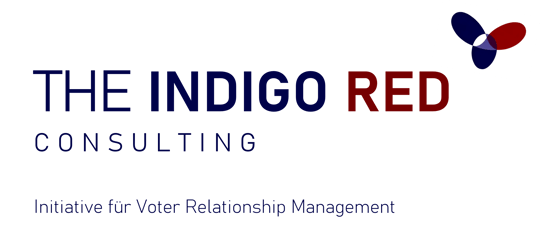Challenging the Myth of Rational Electoral Decisions
Since the 1950s, electoral research, shaped by works such as "The People's Choice" and "An Economic Theory of Democracy," has laid the foundation for understanding voter behavior. However, these approaches primarily focus on short-term election outcomes and overlook the need for long-term relationships between voters and parties. In light of growing political disillusionment and alienation from democratic processes, a paradigm shift is necessary. Political communication must prioritize the voter and conceive democracy as an everyday experience to foster enduring connections and strengthen democracy.
Dennis Rudolf
4/2/20243 min read
Since the "behavioral revolution" of the 1950s, electoral research has relied on a tetrad of classics: „The People’s Choice” (Lazarsfeld et al. 1944), „An Economic Theory of Democracy“ (Downs 1957), “The American Voter” (Campbell et al. 1960) und “Party Systems and Voter Alignments” (Lipset & Rokkan 1967). These works are pivotal because they address a quasi-universal issue in social sciences: the reasons behind individual voting decisions remain largely hidden to researchers, much like the democratic voting process itself.
To explain individual voting behavior and the dynamics of party systems, economic, social-psychological, and micro- and macrosociological approaches approach this problem from different perspectives. However, they all share a common issue: they are primarily interested in the short-term outcome of elections rather than in the voters themselves.
The Current State: From the 1960s to the 21st Century
Along traditional cleavages that structurally organize society and party systems in the long term, these approaches attribute the result of "normal voting behavior" (Dalton 2016) to both instrumental and expressive or socio-psychological pillars. On one hand, voters act based on their own interests and values. Using available information about parties, their platforms, candidates, and promises, they consistently make utility-maximizing or rational voting decisions in political competition. On the other hand, these decisions are embedded in a primarily sociological party identity acquired through familial influences and social environment, which structures the ideological framework for evaluating politics and allows for a "grounded" vote despite "limited knowledge."
To this day, this status quo from 1960s research continues to shape the relationship between parties and their electorate. Parties still rely primarily on short-term strategies to influence voting behavior. During the "hot phase" of election campaigns, the focus is on disseminating faces, messages, and policies among the population. Repeated contact with candidates, slogans, programs, and promises in one-to-many communications aims for short-term congruence with potential voters. An inherited or acquired party identity is merely reproduced every four years and can serve as a space for active engagement and ideological recruitment within party structures, acting as a crusted invited space.
Perilous Path Dependencies in Political Communication
In an era marked by persistent distrust in politics and increasing alienation from democratic processes and institutions, it can become a danger to democracy itself if parties retreat into this status quo. Over the past 70 years, fundamental objections have been raised against a paradigmatic consensus in instrumental voting and voter research. Biases have hindered adequate exploration of the reasons behind voting and non-voting decisions alike (Schultze 2013). Models assuming rational, utility-maximizing individuals not only disregard the diversity of individual values and moral hierarchies shaping political preferences, but also overlook the psychological, emotional, and experiential dimensions of human behavior. Furthermore, the concept of party identification largely remains entrenched within the contexts of the Columbia and Michigan Schools. Despite new societal cleavages (cosmopolitanism vs. communitarianism, economy vs. ecology, etc.) significantly altering political orientations and party landscapes (Dalton 2016), these models still view increasing voter volatility as a temporary deviation from a "normal vote," rather than considering multiple identifications as a new normality.
Existing marketing and political consulting strategies cater to parties by placing electoral strategic interests at the forefront: "How do I win the next election?" They advocate for a means-to-an-end relationship in party communication, which thinks of the relationship with voters as one-sided, hierarchical, and primarily short-term. However, this perspective not only overlooks the complex, multifaceted nature of elections but also has pathological consequences for democracy.
A New Paradigm for Long-Term Party Loyalty
Whether positively or negatively perceived, "elections" and "politics" are inherently linked in the minds of citizens. As a way of life, democracy must therefore be more than a mere act of voting or a short-term election campaign. Politics affects people's daily lives and must be experienced and tangible where their lives unfold: between elections and within the respective lifeworlds of voters. To understand and explain the reasons behind voting behavior and new forms of party loyalty, parties must broaden their perspective. Current psychological research approaches point towards the idea of a "Homo Suffragator" (Bruter & Harrison 2020), whose voting behavior primarily expresses a specific worldview. Elections are not isolated events where interests and preferences are merely solicited and aligned, but rather starting and ending points of individual "voter journeys." In everyday experiences with politics, media, and fellow citizens, responses accumulate to questions such as "who" we are, "how" we live, "to whom or what" we feel connected, and "what" expectations we have for parties and their policies in specific domains.
Such an approach addresses the dwindling trust in political processes, parties, and decision-makers by placing voters at the center and treating them as ends in themselves, never as means. For political communication and marketing, this necessitates a fundamental shift. In times of declining party identification and high voter volatility, communication must always be planned, structured, and developed in a long-term and dialogic manner. Tools of Voter Relationship Design enable the establishment of lasting relationships and positive attitudes, benefiting not only parties on election day but also liberal democracy and the pluralistic society as a whole.


Contact
kontakt@theindigored.com
Follow
Sitemap
Voter Relationship Design
Blog
About us
Contact
+49 173 9388982
